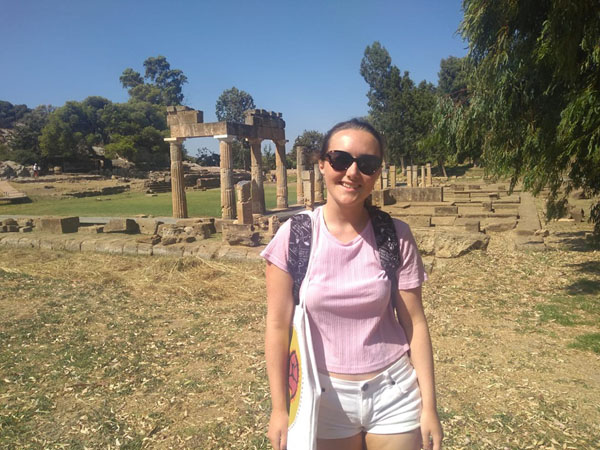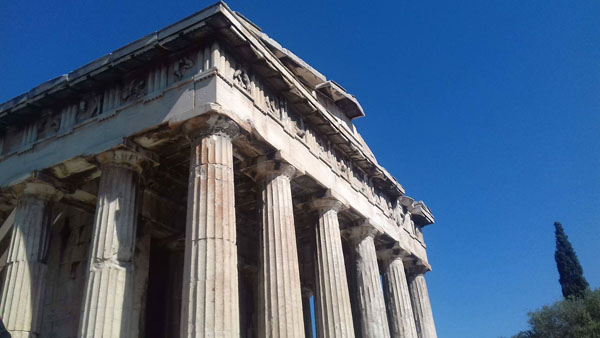Exploring The Archaeology and Topography of Greece
Posted on: 10 February 2020 by Niamh Banner in 2020 posts

Niamh Banner (BA Classical Studies with Spanish) shares her experience at the British School at Athens on their Undergraduate Course: a three-week intensive course exploring ‘The Archaeology and Topography of Greece’ with lectures at dozens of sites, museums and even artefact handling sessions in the BSA fitch laboratory.
The experience enhanced my understanding of phenomenology in archaeological sites. Michael Loy, the fantastically friendly assistant director at the BSA, delivered a thought-provoking lecture at the foot of the Propylaea, asking us to distinguish what made the site of the Acropolis different from an archaeological Disneyland, in terms of how the site is organised and how it caters to tourism by omitting certain eras of the Acropolis’ rich history (for example, the Byzantine period). It was a fascinating lecture, discussing why we choose to focus on the ‘glamorous’ classical period rather than any other period suffered by the Parthenon. This has inspired and tempted me to research the topic further as a potential dissertation.

The intensity of the heat combined with some days lasting from ten to twelve hours climbing up hills, mounds, or even just across brilliant, extensively excavated sites was somewhat demanding to say the least. Note that the name of the course starts with ‘Topography’, and good grief are they faithful to the title. For example, in 48 blissfully roasting hours in Athens, we managed to journey not only up to the Acropolis, its slopes, the Agora and museum, but also managed to stretch our legs even further ascending the Areopagus, the Philopappos Hill and the Pnyx. The Peloponnesian sites were a different story altogether. In fact, the phrase ‘The Peloponnese gets to us all eventually’ was a phrase thrown about often as you manoeuvred from site to site. If you are thoroughly dedicated to your classical history and FitBit steps, this course was literally made for you.

Yet, the reward at the end of these hikes was indescribable. The panoramic view from the Acropolis was mesmerising; the mountainous scenery from the Temple of Apollo at Delphi was even better than the Michael Scott documentaries; Mycenae was archaeologist eye candy. To be taught away from the lecture hall and bask in the glory of Olympia as the Assistant Director spares no detail on the history of the site was one of the greatest pleasures of my time as a student. Our frequent water breaks allowed every student to refresh themselves and socialise with each other through fangirling over their favourite inscription, sculpture, vase or ancient citadel. My personal favourite was the Praxitelean Hermes and Dionysus statue at Olympia, and how skilfully the sculptor had managed to depict the softness of flesh in shiny marble. The sanctuary of Artemis at Brauron was also a hidden gem, fantastically preserved with an informative and aesthetically pleasing museum to compliment it. The trip was every classicist’s dream and there is no doubt about it. If I could do this all again, there would be no hesitation!

I am indebted to the BSA for allowing me to participate in this incredible, eye-opening experience of a lifetime. Their bursary relieved me of the financial pressure of funding the course, and for that I am eternally grateful. The University has also been extremely generous in their support, both financially through the Chris Mee award and in terms of their enthusiastic help with my application process. Without this prize, I would have struggled to fund this unique excursion, so the Chris Mee award was a heaven-sent relief for me. Rather than worry about the cost of travel and feeding myself, I could instead worry about how to prevent myself from saying ‘Calamari’ when I want to say ‘Kalimera’.
Discover more
Study in the Department of Archaeology, Classics and Egyptology at the University of Liverpool.
Keywords: greece, topography, ancient greece, archaeology, classics, Liverpool, study, research, university, student.